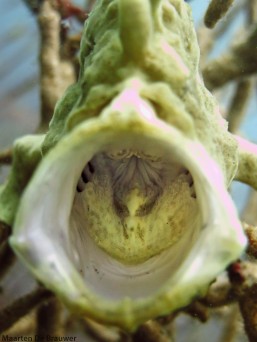After a few weeks of visiting my family in Belgium and loading up on chocolate, beer and hugs of my little niece, it was time to get going again. Just over a week ago I flew back to Asia and the first stop was a small town in Philippines called Dauin.
 Some of you might have already heard about Dauin. You might have heard/read me ranting on about how great the muck diving is, dived there yourself or maybe you’ve seen some of the many underwater photos appearing on various social media. For those of you who haven’t heard of it, Dauin is a small town of about 25000 inhabitants in the south of Negros. The place is close to the city Dumaguete and sometimes the two are used as synonyms in dive circles (they are not). Dauin is a sleepy coastal town where most people used to make a living from fishing or farming. “used to”, because it’s rapidly getting renowned for its awesome muck diving.
Some of you might have already heard about Dauin. You might have heard/read me ranting on about how great the muck diving is, dived there yourself or maybe you’ve seen some of the many underwater photos appearing on various social media. For those of you who haven’t heard of it, Dauin is a small town of about 25000 inhabitants in the south of Negros. The place is close to the city Dumaguete and sometimes the two are used as synonyms in dive circles (they are not). Dauin is a sleepy coastal town where most people used to make a living from fishing or farming. “used to”, because it’s rapidly getting renowned for its awesome muck diving.
In all fairness, the story actually began with coral reef diving. Facing Dauin lies a small island called Apo. The reefs around Apo were the very first MPA (Marine Protect Area) in the Philippines and have been a poster child for MPAs in developing countries ever since. The fame of Apo brought in divers and it did not take too long before people discovered that the shore dives off Dauin were something quite special.
 The beaches of Dauin are mostly made up of volcanic sand, though they are not as black as the ones you find in Lembeh. While there are a few small coral patch reefs, the real treasures are found in the sand. It’s muck diving at its best: you’ll find frogfishes, seahorses, mimic octopuses, flamboyant cuttlefishes, … The fact that most sites are easily reached and that there is a growing muck dive industry makes it an ideal area for me to conduct research.
The beaches of Dauin are mostly made up of volcanic sand, though they are not as black as the ones you find in Lembeh. While there are a few small coral patch reefs, the real treasures are found in the sand. It’s muck diving at its best: you’ll find frogfishes, seahorses, mimic octopuses, flamboyant cuttlefishes, … The fact that most sites are easily reached and that there is a growing muck dive industry makes it an ideal area for me to conduct research.
Last year I spent most of May in Dauin, doing a lot of diving and a lot of running around between divecentres to talk to people about dive tourism. This time I just went back for 5 days to talk to a few more people to fill in some gaps in my data on the socio-economic value of muck dive tourism. So unfortunately no research dives this time. Luckily I did manage to meet up with my good friend Dragos, who uses Dauin as a base to take some pretty sweet underwater photos. The underwater pictures in this post are his. If you want to see more of his (award winning) work, check out his site here.

The small trip to Dauin was the end of a productive, exhausting and entertaining research trip. I am writing this post in Manila airport, as I’m finally on my way back to Perth. After nearly 8 months of fieldwork and traveling it’ll be great to see my colleagues again and to start writing up some of my results. So keep an eye out on the blog for updates of what is going on. Or if you’re in Singapore in April, come and have a chat at the ADEX Dive expo, I am giving a talk and will be presenting some of my results.




